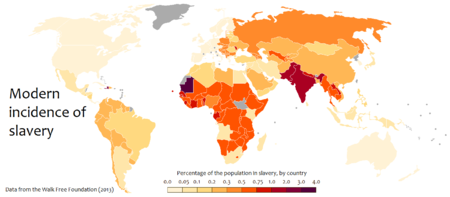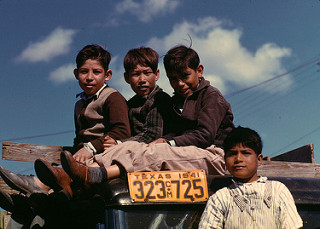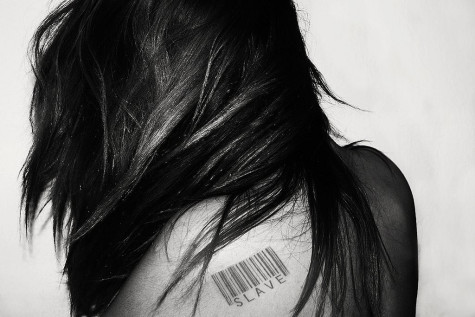Yes, Slavery Still Exists
December 17, 2015
Slavery did not end in the 19th century. Since the beginning of time, slavery has been an integral and prominent part of human culture and society. With the advent of the 21st century, there has been no change. Slavery still exists and is very much alive.
Slavery can be categorized into three types; child slavery, labor slavery, and sex slavery. All of these fall under the umbrella of contemporary slavery. Slavery is the third largest crime industry worldwide, with nearly 33 billion dollars in profit every year.
There are 36 million slaves worldwide. Approximately 800,000 slaves are transported across borders each year, and around 14,000 of those cases are United States. Over 50 percent of slaves are women and children. Despite all staggering statistics, modern slavery is one of the most under researched topics. It barely gets media coverage, and even though it is an ongoing issue, world leaders rarely stop to give it attention.

Data of percentage of slave population by percentage
Finding experts to provide prospective on this topic was a challenge, even with professors and researchers dedicated to historical slavery. There is a lack of knowledge and awareness of one of the world’s largest issues.
Bringing everything to light, the question remains: when are we as a society going to educate ourselves on slavery in the 21st century and when are we going to say enough is enough?
Child slavery exists in all parts of the world. According to the Walk Free Foundation “child slavery is where child is transferred by one person to another for remuneration or other consideration or; or are used in sexual activities or are forcibly recruited in armed conflict.”
The Walk Free Organization, which helps to fight modern slavery, alternatively defines child slavery as, “a child or young person under the age of 18 years, delivered by either or both of his natural parents or by his guardian to another person, whether for reward or not, with a view to the exploitation of the child or young person or of his or her labor.”
There are an estimated 5.5 million child slaves currently. Forms and practices of child slavery are exhibited all around the world, specifically in centralized Africa, where child soldiers present one of the largest factors in the exploitation of children. In the past decade the number of child soldiers has risen to more than 300,000, with more than 50,000 in Senegal and 10,000 in the Central African Republic. This issue is not going away any time soon.
Other forms of labor slavery are also very prominent in Africa and around the world. The 2006 movie Blood Diamond depicts child slaves in the countries of Rwanda and Tanzania, being tasked with finding rare and unique jewels in mines and rivers. The movie was based on a true story and changed little details.
Several forms of labor slavery exist in various scenarios around us such as debt bondage which is “when a person is forced to work as a means of repayment for a loan but when the value of that work is not applied to the repayment of the debt. The debt and the work may not be clearly defined.” This usually occurs when work is promised on false pretenses.
The sale and trafficking of children through debt bondage happens in the most distraught and impoverished countries. Examples of this are serfdom and compulsory labor, which includes the recruitment of child soldiers and armed forces.
Child prostitution occurs for both sexual exploitation but also the production of child pornography, which can also result from sex bondage.
These different types of slavery fall under the category of child slavery and still exist right now in the 21st century. Each of these forms are physically and mentally damaging to a child.
Labor slavery is the second largest form of slavery. According to the Walk Free Foundation his is defined as “all work or service, which is exacted from any person under the menace of any penalty for which said person has not offered himself voluntarily.”
Three out of every 1,000 children are in forced labor slavery today, with 21 million worldwide including and 1.5 million in the United States. According to the International Labor Organization,19 million of these victims are enslaved by private individuals or enterprises, while the other 2 million are enslaved by rebel groups, militant forces or state influenced parties. Within these organizations and enterprises, an estimated $150 billion is generated. In the most corrupt countries and governments, slavery is a way to fuel their economy.

Boy’s sitting on truck at labor camp in Texas
In America, human traffickers take advantage of immigrants seeking a new life. By reaching out to these “recruiters” who have job openings available, immigrants are bound to pay thousands of dollars to make it across the border by using their own money. When they arrive in America, already in debt, they are forced to pay off what they owe for getting across safely. Since the jobs that the recruiters offer are not there anymore, immigrants are forced to pay off their debt in other ways. For women this ranges from being a house servant to being a part of a brothel. For men, this would be working in the field for countless hours without relent or a living wage. Either way, both parties are not allowed to leave until their debt is paid off. This type of labor slavery is a never-ending cycle that is hard to break.
Kevin Bales, professor and researcher of modern slavery, highlighted specific stories he heard in his trips around the globe in his TED Talk in 2010. “All around the world I’ve been told an almost identical story. People say, ‘I was home, someone came into our village, they stood up in the back of a truck, they said, ‘I’ve got jobs, who needs a job?’ And they did exactly what you or I would do in the same situation. They said, ‘That guy looked sketchy. I was suspicious, but my children were hungry. We needed medicine. I knew I had to do anything I could to earn some money to support the people I care about.’ They climb into the back of the truck. They go off with the person who recruits them. Ten miles, 100 miles, 1,000 miles later, they find themselves in dirty, dangerous, demeaning work. They take it for a little while, but when they try to leave, bang. The hammer comes down, and they discover they’re enslaved.”
Bales elaborated on the scenario of how someone is launched into slavery. Each and every day this process takes place and the cycle never stops. Until there is a way to have alternative options to slavery, it’s presence will always exist in society.
The last major category of slavery is sex slavery or sexual exploitation. Several forms of this appear across the globe. This type of slavery ranges from girls in the United States to young women trapped in India. Wherever it may be on the spectrum, the sexual exploitation of victims span to touch every continent.
The Polaris Project is a non-profit organization that helps to combat modern slavery and human trafficking both in the United States and around the globe. Their website describes both the differences between different types of sex trafficking and also highlights the different scenarios in which a victim would be lured into the dangerous business.
The site notes, “The situations that sex trafficking victims face vary dramatically. Many victims become romantically involved with someone who then forces or manipulate them into prostitution. Others are lured in with false promises of a job, such as modeling or dancing. Some are forced to sell sex by their parents or other family members. They may be involved in a trafficking situation for a few days or weeks, or may remain in the same trafficking situation for years.”

Photo of a girl with a barcode on her back displaying that she is “for sale”
Despite these staggering statistics The light at the end of the tunnel may be visible. In the past decade the rates of slavery worldwide have actually gone down. Professor Bales highlighted the progress that humanity has made and that slavery is just for us to kick it out the door. He notes, “That means, when you multiply it up, the estimated cost of not just freedom but sustainable freedom for the entire 27 million people on the planet in slavery is something like 10.8 billion dollars — what Americans spend on potato chips and pretzels, what Seattle is going to spend on its light rail system: usually the annual expenditure in this country on blue jeans, or in the last holiday period when we bought Gameboys and iPods and other tech gifts for people, we spent 10.8 billion dollars. Intel’s fourth quarter earnings: 10.8 billion.”
Bales specified the roles that humanity has to play in getting rid of one of its most daunting problems. All in all even though it may not be right in front of us, each person has a role to play in the expulsion of Modern Slavery. Poverty, media coverage, and the governments’ passivity allow for the continued existence of slavery. In order to finally eliminate it, society must take a stand.